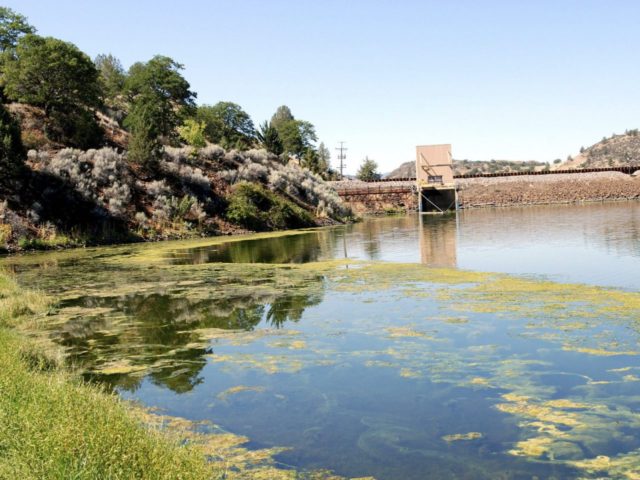While America was distracted as 500,000 cubic feet per second of water flooded over the Oroville Dam, the Klamath River flooded in what could have been a catastrophe if Gov. Jerry Brown had already completed his funded plan to tear down four of its dams.
Reginald Kennedy, National Oceanic and Atmospheric Administration (NOAA) service hydrologist for the Eureka Station, told Breitbart News that Klamath River flood waters from heavy rains and runoff crested on February 10 at 5 a.m. at a height of 41.3 feet.
The river has since fallen back by 20 feet, due to several days of sunny skies. But NOAA expects that another Pineapple Express atmospheric storm-train beginning Wednesday evening will bring up to 2.5 inches of rain over 7 days, and will probably cause another flood.
California Governor Jerry Brown inked an agreement in April to tear down four sustainable hydroelectric dams on the Klamath River owned by PacifiCorp utility. Unable to modernize the structures due the Brown administration and environmentalist lawsuits, PacifiCorp agreed to pay a $200 million abandonment cost, and Gov. Brown grabbed $250 million from taxpayers by pushing for the passage of the $7.5 billion Proposition 1 Water Bond.
The Sacramento Bee reported Brown’s comments at a North Coast conference with the Governor of Oregon and the U.S Secretary of the Interior last year, where they agreed to tear down the four dams on the Klamath River: “This is a good exercise of humankind correcting some of the mistakes that it’s made in the past.”
But California’s North Coast counties of Mendocino, Humboldt, Trinity and Del Norte have always been susceptibility to devastating floods, property damage and deaths. That is why the Klamath River Project, built in the early 20th century, featured a system of seven dams and a network of sustainable hydroelectric power stations to slow raging flood waters.
The North Coast was hit hard in the “California Flood of 1955,” which the U.S. Geological Service called a hundred-year weather event. But the 74 deaths and $200 million in property damage that year were spread out across California’s 58 counties.
Despite the North Coast’s large investment in infrastructure, the area was the center of the “Christmas Flood of 1964,” which’ the USGS deemed a “thousand year weather event.” A series of storms that lasting from December 21, 1964 through January 7, 1965 dumped massive amounts of snow in the local mountains. The North Coast was then hit with warm rains from a Pineapple Express that melted the snow and inundated local watersheds.
The “Christmas Flood of 1964” devastated about 200,000 square miles, an area roughly the size of France. There were 47 deaths, tens of thousands were left homeless, and property damage in today’s dollars was be the equivalent of $3.9 billion.
The wildly popular then-Governor Pat Brown had been seen as a champion of building flood control lakes and dams that also provided a source of water for thirsty Southern California. At that time, California was seeing legal migration of 1,000 persons per day from other states.
But Brown had provided very little in the way of flood control infrastructure for the North Coast, and his reputation was tarnished from the scale of the devastation.
After two terms, Brown was politically crushed just two years later in the November 1966 California governor’s race by first-time candidate Ronald Reagan, who won 57 percent of the vote and defeated Brown by a stunning 1 million votes.
The un-noticed Klamath River, even with its dam system still in place, is expected to flood and potentially cause serious damage to the North Coast when the rains hit. If four of the seven dams were already torn down, the flood and destruction from the Klamath River would likely have been be epic.
Photo: file

COMMENTS
Please let us know if you're having issues with commenting.